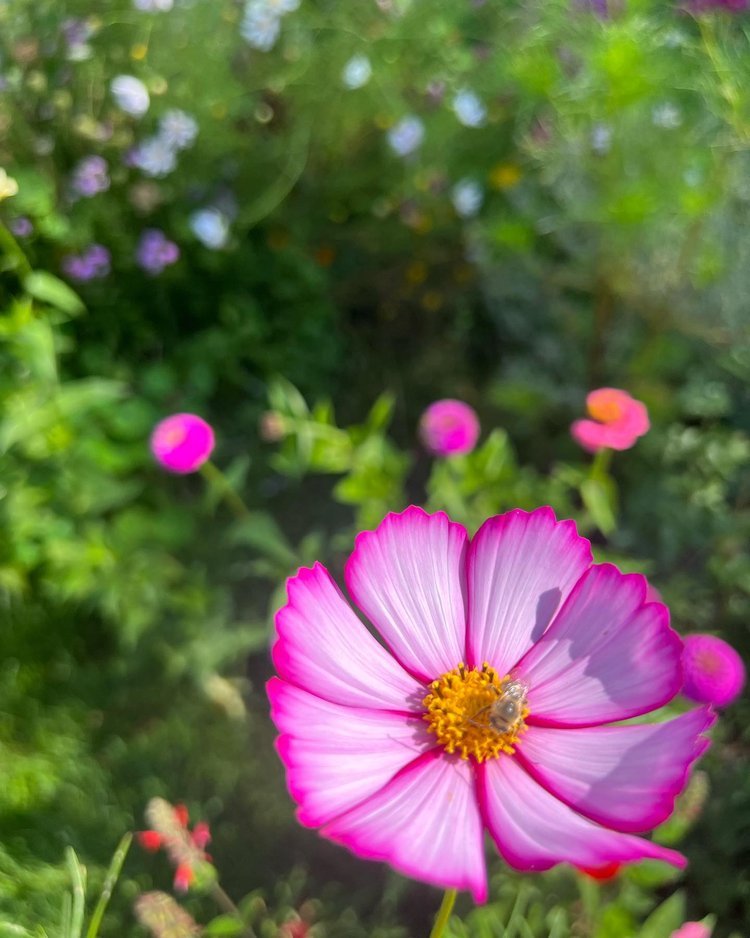Cosmos
(Cosmos bipinnatus)
Photo by Ilana Sobo
In the garden Vermont 2023
Cosmos, a genus of flowering plants in the daisy family (Asteraceae), offers gardeners a vibrant display of color and charm, making it a beloved addition to ornamental and pollinator-friendly gardens. Originating primarily in Mexico and South America, cosmos flowers thrive in a range of climates and soils, with their cheerful, daisy-like blooms gracing gardens across the world. Among the most popular species are Cosmos bipinnatus, commonly known as garden cosmos or Mexican aster, and Cosmos sulphureus, known as sulfur cosmos. Cosmos bipinnatus is celebrated for its delicate, fern-like foliage and a wide array of colors, including white, pink, and magenta, while Cosmos sulphureus showcases warm shades of yellow, orange, and red. Both species are cherished for their ability to attract pollinators, including bees, butterflies, and hummingbirds, making them essential plants for supporting biodiversity and promoting healthy ecosystems.
Cosmos is valued not only for its beauty but also for its resilience and ease of cultivation. These sun-loving annuals are drought-tolerant, thriving in well-drained soils with minimal care. They are especially well-suited to pollinator gardens, meadow-style plantings, or any space that aims to combine ecological benefits with aesthetic appeal. Planting cosmos is straightforward—direct sow seeds after the last frost, or start them indoors and transplant seedlings when the weather warms. Their prolific flowering period extends from midsummer until the first frost, providing a long-lasting source of nectar for pollinators. Deadheading spent flowers encourages continued blooming, while allowing some to go to seed ensures natural reseeding for the following year.
Cosmos flowers are not only a feast for the eyes but also a symbol of harmony and peace in many cultures. They inspire a sense of whimsy and playfulness in garden design, whether used as borders, in cut flower arrangements, or as companions to vegetables where their pollinator-attracting qualities can improve crop yields.
References
Armitage, Allan M. Herbaceous Perennial Plants: A Treatise on their Identification, Culture, and Garden Attributes. Champaign, IL: Stipes Publishing, 2008.
Beckett, Kenneth. The Garden Encyclopedia of Flowering Plants. New York: Doubleday, 1992.
Phillips, Roger, and Martyn Rix. Annuals and Biennials: A Field Guide to the Popular Annuals and Biennials in Cultivation. New York: Random House, 1989.
Pollan, Michael. Second Nature: A Gardener's Education. New York: Grove Press, 1991.
Werner, Patricia. Wildflowers of the World. New York: Facts on File, 1993.

